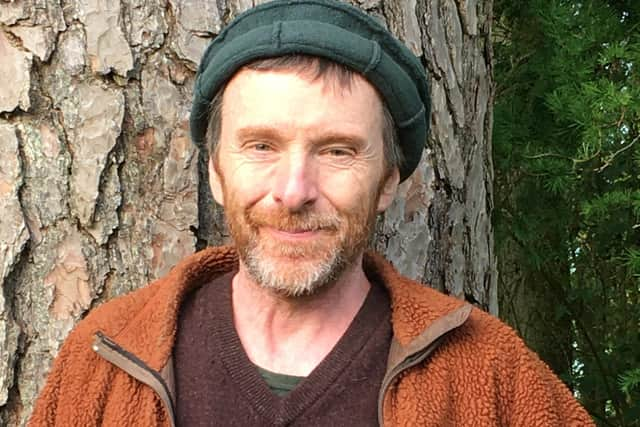Book review: The Bone Cave, by Dougie Strang
Every now and then, an important key to gaining a fuller understanding of a book can be found, not in the body of the text itself, but in the short, functional passages that surround it: the dedication, the acknowledgements, an unexpectedly illuminating author’s note. In the case of Dougie Strang’s new book, The Bone Cave, one of these handy little signposts is hidden in the acknowledgements: “I am grateful to all the Dark Mountain crew for their support, editorial wisdom and enduring friendship,” he writes. The same detail crops up again in the short author biography on the dust jacket: “[Strang]... is a member of the Dark Mountain Project.”
To be clear, the main text of The Bone Cave makes no mention of the Dark Mountain Project, and it would be entirely possible to read it and enjoy it with no knowledge of what this organisation is or what it does. However, to begin The Bone Cave with at least some awareness of it is to understand the book not just as a fascinating insight into the ways in which landscape and folklore are intertwined here in Scotland, but also as part of a much wider conversation about how the kinds of stories which are prevalent in a society will ultimately inform the way in which that society functions.
Advertisement
Hide AdAs Strang puts it in his bio, the Dark Mountain Project is “an international network of writers, artists and thinkers whose work addresses current social and environmental crises.” However, it’s the “how” of what they’re doing as much as the “what” that’s relevant here. When they launched the Dark Mountain Project in 2008, the writers Paul Kingsnorth and Dougald Hine laid out their aims in a 20-page manifesto, titled Uncivilisation. I’ve re-read this remarkable document many times over the years, often using it as a filter through which to review new works of both fiction and non-fiction, and – remarkably – the older it gets, the more relevant it seems.


At the heart of it all lies the importance of stories. In their “Eight principles of Uncivilisation”, Kingsnorth and Hine posit that we live in “a time of social, economic and ecological unravelling” and that “the roots of these crises lie in the stories we have been telling ourselves.” The solution they propose? “We intend to challenge the stories which underpin our civilisation: the myth of progress, the myth of human centrality, and the myth of our separation from ‘nature’... We will reassert the role of storytelling as more than mere entertainment. It is through stories that we weave reality.”
Without any of that context, the publisher’s pitch for The Bone Cave sounds fairly innocuous: “A vivid account of a journey through the Scottish Highlands, The Bone Cave follows a series of folktales and myths to the places in which they’re set.” Against the backdrop of the Dark Mountain Project’s manifesto, however, it becomes clear that Strang is actually attempting something much more subversive: what he’s really doing, with The Bone Cave, is drawing on the rich heritage of the Scottish folk tradition to show us an alternative version of Scotland – one in which stories don’t just exist in the abstract, but one in which they are firmly tethered to the landscape, and where people feel bound much more closely to the land as a result.
As Strang explains in his introduction, he didn’t set out with the aim of traversing the Highlands via any established route – instead, he navigated via old folktales, and specifically folktales which reference the landscape. “I used stories as waymarks,” he writes, “and made my way between the places that held those stories according to chance and circumstance.”
Of particular interest to him is the Cailleach, the mystical “old woman of storms,” who was a key figure in the pre-industrial hunting culture of the Highlands. He begins his journey at Beinn a’ Bhric near Corrour Station, where the mythical hunter Dòmhnall Donn-shùileach was once said to have shared a meal with the Cailleach. From there he stravaigs as far north as Cranstackie, where there is a loch named after the Cailleach, and as far west as Loch Bà on the Isle of Mull, where the Cailleach, magical though she is, is supposed to have met her end. Other featured locations include the River Conon, where a group of men are said to have tried to save a traveller from a murderous kelpie, and Gleann Gailliche, where two mysterious giants once came down from the mountains and caused the glen to flourish as never before.
The ways in which these stories are linked to the landscape – and to the daily lives of the people who used to inhabit it – are expertly teased out by Strang. He concludes by pointing out how “biodiversity and cultural diversity go hand in hand” and how “stories, clinging on, ringing down through the years, remind us how to live in right relationship with place and with the other beings that we share place with.” His ultimate wish, he says, is to see land reform in Scotland to “continue apace”, resulting in “a land restored and re-storied.” Amen to that.
The Bone Cave, by Dougie Strang, Polygon, £14.99
